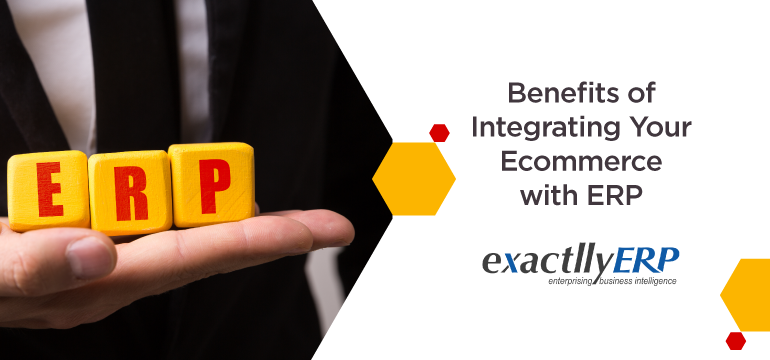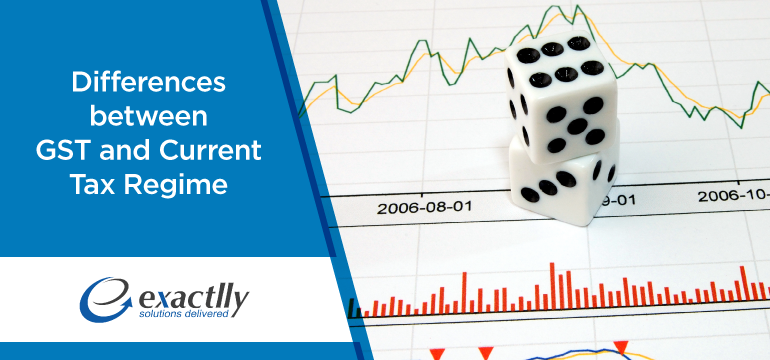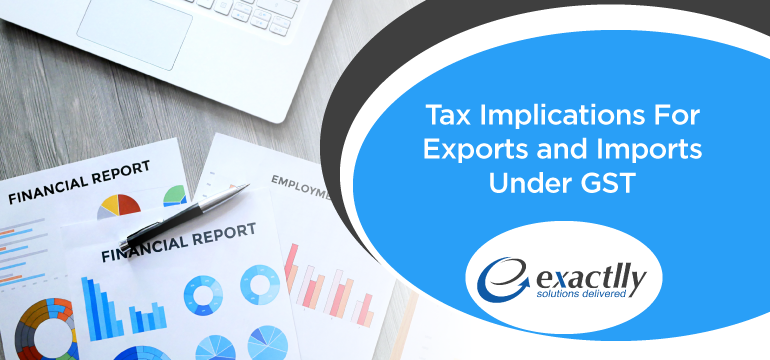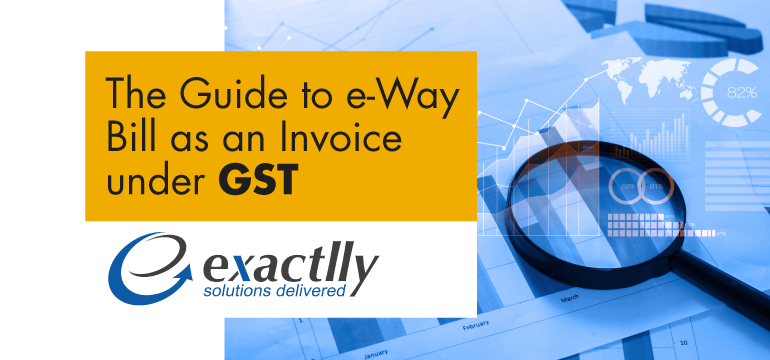Understanding GST and E-commerce Concepts

Electronic commerce, also known as e-commerce, has transformed business in India altogether. The e-commerce industry in India is impacted by several taxes as each state has its own rules pertaining to taxation on goods and services supplied through e-commerce. However, since there is slight confusion in the treatment of these taxes, in this article we have explained all that you need to know regarding GST and e-commerce concepts. The tax environment against the backdrop of e-commerce, especially with the advent of products like e-wallets and cashbacks, requires clarity.
Most participants in the e-commerce industry are looking to the GST as a beacon of hope as it aims to remove various levies of taxes and do away with rules that have been the cause of inconsistency. The GST draft model law provides rules of a specific nature that aim to impact this industry better, as explained through the course of this article.
We have provided a brief overview of e-commerce operators and suppliers and e-commerce platforms under the GST regime as follows –
- E-Commerce Operator –
Any person that owns, operates, manages any kind of a digital or an electronic platform for facilitating e-commerce operations is an e-commerce operator. Under the GST regime, an e-commerce operator is required to have the following –
- Registration –
Mandatory registration under the GST is a must for any e-commerce operator no matter what their turnover may be.
- Payment of tax on notified services –
The government is in the process of notifying certain specific services on which the supply of tax shall be payable by the e-commerce operator and not the supplier. Therefore, in case the e-commerce operator does not have an establishment in a particular state where he is tax, then someone else on his behalf in that state shall be liable for the payment of such tax. In case the e-commerce operator fails to have both an establishment as well as a representative in a particular state for the payment of tax, then it is the e-commerce operator’s duty to appoint a person in that state for the payment of such tax.
- Collection of tax at source –
For all taxable supplies made through his platform, an e-commerce operator is required to collect 2% on the net value of such taxable supplies. This is done when the consideration for the taxable supplies has been collected by the e-commerce operator.
Formula –
Taxable supplies (as made by all registered taxable persons) through the operator (other than any notified supplies on which the tax has been paid by the e-commerce operator) (-) Value of all the taxable supplies that have been returned to the e-commerce suppliers (=) Net Value of all taxable supplies
For example, F&M is an e-commerce operator and Max Traders and Bob Pvt. Ltd. are suppliers on F&M and have made the following supplies in the month of September 2017–
Max Traders and Bob Pvt. Ltd. together have taxable supplies recorded in the outward supplies register of fast deals amounting to INR 3,00,000 of which INR 30,000 worth of taxable supplies were returned. Therefore, the net taxable supplies amount to INR 2,70,000 and the tax collected at source at 2% on this amount would be at INR 5,400. Therefore, the net taxable supplies of fast deals recorded is INR 2,70,000 and the GST collected is INR 5,400 on the transaction.
-
Tax payment process and returns –
-
Form GSTR-8 must be mandatorily furnished by an e-commerce operator by the 10th of every month. This form shall contain details pertaining to all outward supplies that have been made vide the e-commerce operator’s platform in the last month and this includes details of any returned supplies. The form contains aggregate details of all supplies made to the registered taxable persons and unregistered persons in the form of an invoice. It is the duty of the e-commerce operator to pay taxes as collected from the suppliers. For example, if Max Traders furnishes Form GSTR-8 on October 10, 2017 then the form is required to show net taxable supplies made through the e-commerce platform amounting to INR 2,70,000 and taxes collected as INR 5,400.
-
If there are any conflicts or discrepancies by the suppliers in the information furnished by the e-commerce operator, then Form GST ITC-1 is required to be filed by the 21st of the month for the discrepancies notified, for rectification, in the month in which such discrepancy has been notified. For example, in case a discrepancy in reported in the Form GSTR-8 furnished by Max Traders on October 10, 2017 then by October 21, 2017, Form GST ITC-1 is required to be filed providing the rectifications of such discrepancy.
-
Form GSTR-8 must be mandatorily furnished by an e-commerce operator by the 10th of every month. This form shall contain details pertaining to all outward supplies that have been made vide the e-commerce operator’s platform in the last month and this includes details of any returned supplies. The form contains aggregate details of all supplies made to the registered taxable persons and unregistered persons in the form of an invoice. It is the duty of the e-commerce operator to pay taxes as collected from the suppliers. For example, if Max Traders furnishes Form GSTR-8 on October 10, 2017 then the form is required to show net taxable supplies made through the e-commerce platform amounting to INR 2,70,000 and taxes collected as INR 5,400.
- E-Commerce platform Suppliers –
Any person that supplies goods or services using an e-commerce platform is known as a supplier on an e-commerce platform. Under the GST regime, a supplier on an e-commerce platform is required to have the following –
- Registration –
Mandatory registration under the GST is a must for any e-commerce supplier, provided the aggregate turnover of such supplierdoes not exceed the threshold limit.
- Not eligible for the Composition Scheme –
E-commerce suppliers are ineligible for being registered under the Composition Scheme, even when their aggregate turnover does not exceed the threshold limit of INR 50 lakhs. They simply do not have the option to become a composition tax payer.
- Process of returns –
The GST return process as applicable to regular dealers is also applicable to e-commerce suppliers. E-commerce suppliers are required to furnish the following returns with the following details –
-
Form GSTR-1 as on the 10th of the month – this form is to contain details pertaining to all outward supplies that have been made using the e-commerce platforms. Aggregate details of all registered taxable persons and unregistered persons are to be provided in an invoice-wise manner.
-
Form GSTR-2A as on the 11th of the month – this form is to contain details pertaining to an aggregate tax value as collected by the e-commerce operators in the previous month, basis the Form GSTR-8 filed by e-commerce operators (as explained earlier above). For example, Max Traders and Bob Pvt. Ltd. furnish Form GSTR-1 on October 10, 2017 furnishing all details of taxable supplies made through F&M Deals. Basis the same, form GSTR-2A has been made privy to Max Traders and Bob Pvt. Ltd on October 11, 2017, providing details of all taxes collected by F&M.
-
Form GSTR-2 as on the 15th of the month – this form is to contain details of all taxes collected by the e-commerce operator for accepting or modifying. Such tax as collected shall be credited on a provisional basis to the electronic cash ledger for being set off against any tax liabilities.
- Form GST ITC-1 as on the 21st of the month – this form is to contain details of rectification of any discrepancies with respect to the supplies as reported by the e-commerce operator. The rectification is required to take place in the same month of notifying the discrepancies. In case such discrepancy has not been rectified and the value of the supplies furnished by the e-commerce operator is greater than the value which is furnished by the supplier, then the differential amount shall be added to the total tax liability payable by the supplier, to the succeeding month.






